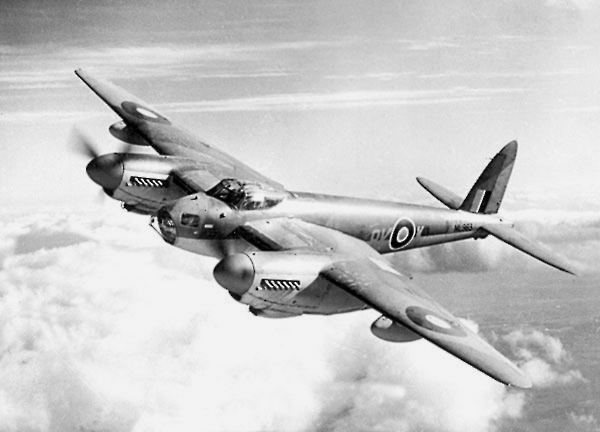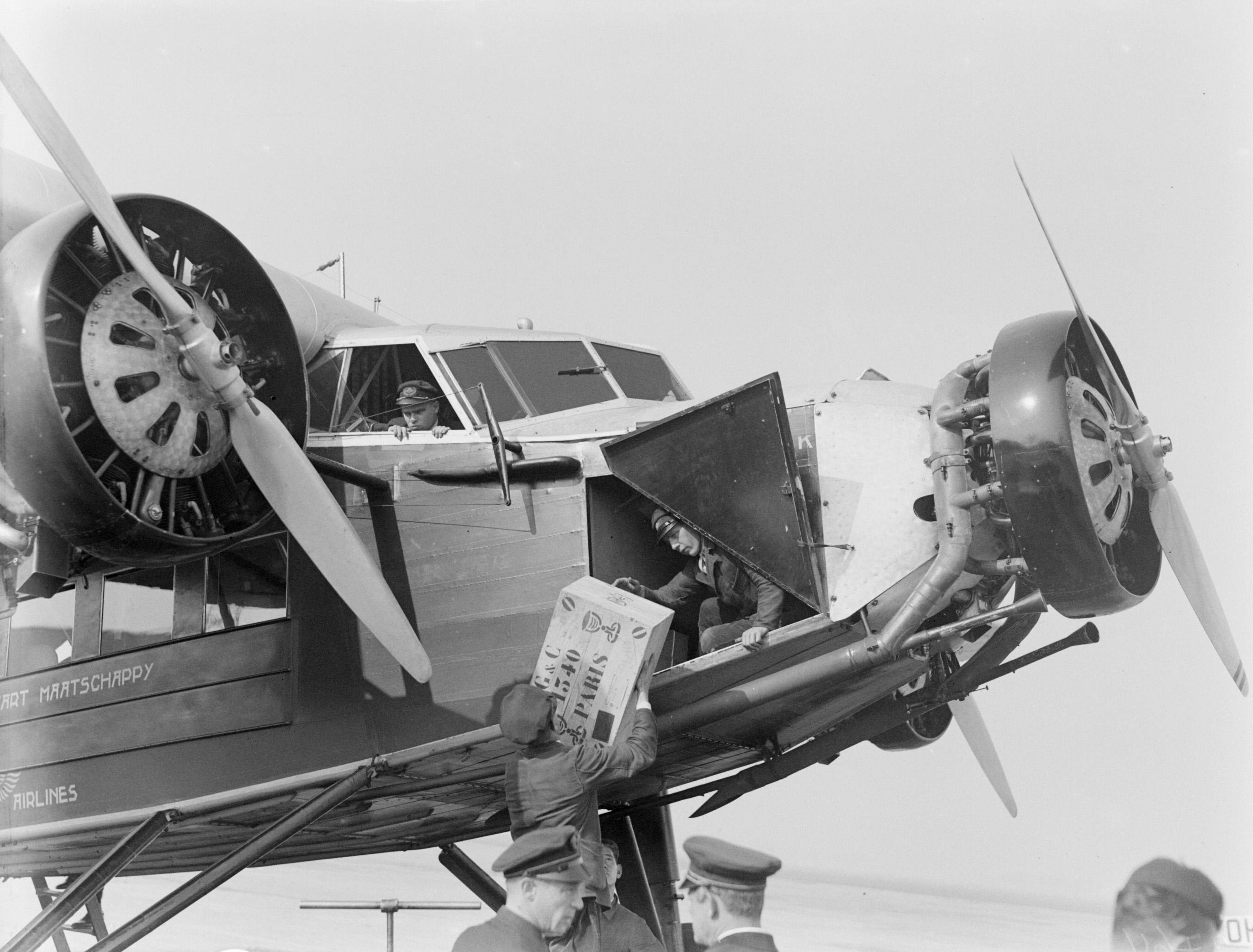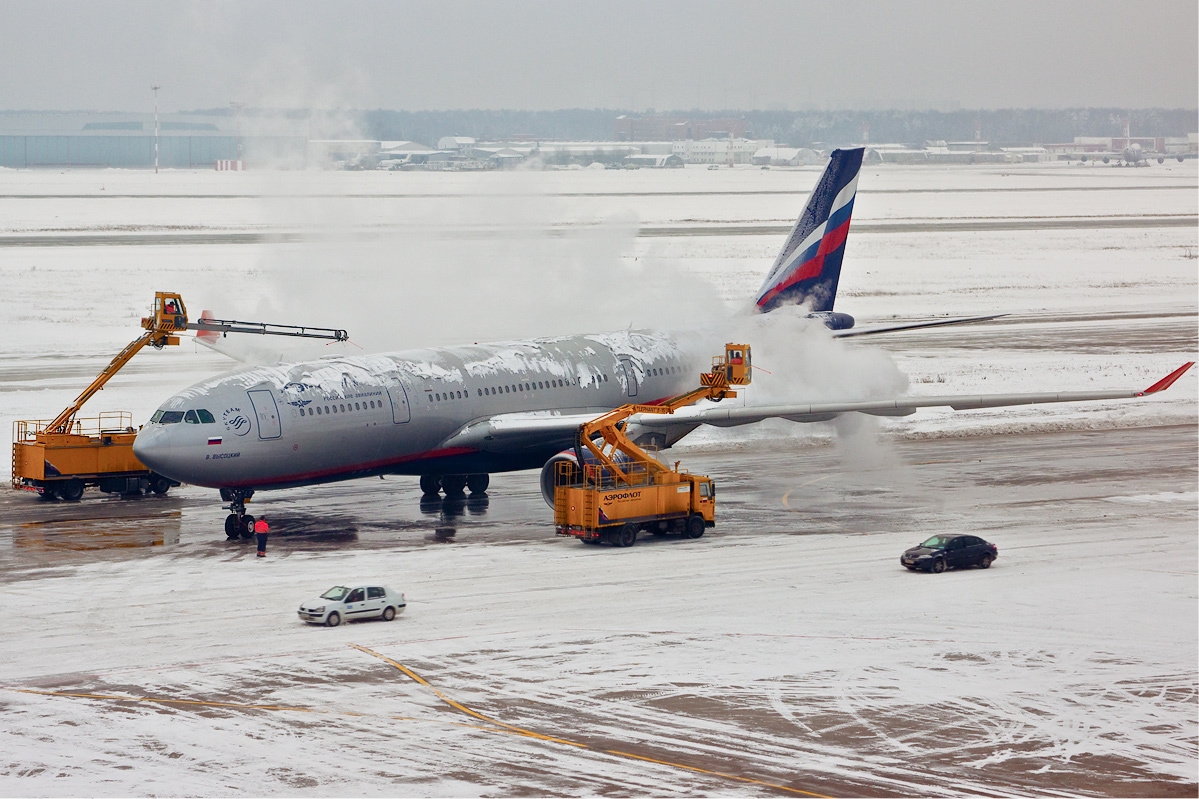|
Petlyakov Pe-3
The Petlyakov Pe-3 was the long-range heavy fighter version of the successful Petlyakov Pe-2 high-speed dive bomber used by the Soviet Union during World War II. Its design and use followed a comparable path to those taken by the German Luftwaffe with the Junkers Ju 88 and the British Royal Air Force with the De Havilland Mosquito. The Soviets realized the need for a night fighter after the first night bombing of Moscow during Operation Barbarossa. The Petlyakov Pe-2 was selected for modification as the most suitable aircraft available. It was initially used for daylight ground attack missions during the Battle of Moscow, but this proved to be costly since the aircraft was unarmored. Armor and additional guns were retrofitted to the existing aircraft to make it more effective, but the evacuation of the sole factory building the Pe-3 in October 1941 limited the number of aircraft available and many units of the Soviet Air Forces flying the Pe-3 were either disbanded or converted t ... [...More Info...] [...Related Items...] OR: [Wikipedia] [Google] [Baidu] |
Heavy Fighter
A heavy fighter is a historic category of fighter aircraft produced in the 1930s and 1940s, designed to carry heavier weapons, and/or operate at longer ranges than light fighter aircraft. To achieve performance, most heavy fighters were twin-engine, and many had multi-place crews; This was in contrast to light fighters, which were typically single-engine and single-crew aircraft. In Germany, they were known as ''Zerstörer'' ("destroyer"). The heavy fighter was a major design class during the pre-World War II period, conceived as long-range escort fighters or heavily-armed bomber destroyers. Most such designs failed in this mission, as they could not maneuver with the more conventional, single-engine fighters, and suffered heavy losses. Most notable among such designs was the Messerschmitt Bf 110, which suffered great losses during the Battle of Britain. An exception was the American Lockheed P-38 Lightning, which proved an effective heavy fighter; even against smaller, lighter, ... [...More Info...] [...Related Items...] OR: [Wikipedia] [Google] [Baidu] |
Berezin UB
The Berezin UB (russian: УБ - Универсальный Березина) (''Berezin's Universal'') was a 12.7 mm caliber Soviet aircraft machine gun widely used during World War II. Development In 1937, Mikhail Yevgenyevich Berezin began designing a new large-caliber aircraft machine gun chambered to the 12.7 mm round used by infantry machine guns. The new design passed factory trials in 1938 and was accepted into service in 1939 under the designation BS (Березин Синхронный, Berezin Sinkhronniy, Berezin Synchronized). The rate of fire made it well suited for use as defensive armament in aircraft. While a successful design, BS was not without its faults, the biggest being its cable-operated charging which required considerable physical strength. Continued development resulted in the improved UB which came in three versions: UBK (Крыльевой, Krylyevoi, for the wings), UBS (Синхронный, Sinkhronniy, Synchronized), and UBT (Турель� ... [...More Info...] [...Related Items...] OR: [Wikipedia] [Google] [Baidu] |
Soviet Air Defence Forces
The Soviet Air Defence Forces (russian: войска ПВО, ''voyska protivovozdushnoy oborony'', ''voyska PVO'', ''V-PVO'', lit. ''Anti-Air Defence Troops''; and formerly ''protivovozdushnaya oborona strany'', ''PVO strany'', lit. ''Anti-Air Defence of the Country'') was the air defence branch of the Soviet Armed Forces. Formed in 1941, it continued being a service branch of the Russian Armed Forces after 1991 until it was merged into the Air Force in 1998. Unlike Western air defence forces, V-PVO was a branch of the military unto itself, separate from the Soviet Air Force (VVS) and Air Defence Troops of Ground Forces. During the Soviet period it was generally ranked third in importance of the Soviet services, behind the Strategic Rocket Forces and the Ground Forces. History Service during Second World War Preparations for creation of the air defence forces started in 1932, and by the beginning of Operation Barbarossa, June 1941, there were 13 PVO zones within the military di ... [...More Info...] [...Related Items...] OR: [Wikipedia] [Google] [Baidu] |
Ilyushin Il-4
The Ilyushin Il-4 (DB-3F) (russian: Ильюшин Ил-4 (ДБ-3Ф)) was a Soviet twin-engined long-range bomber and torpedo bomber, widely used by the Soviet Air Force and Soviet Naval Aviation during World War II. Design and development In 1938, the Ilyushin design bureau redesigned the Ilyushin DB-3 to ease production and improve its performance, the revised version receiving the designation DB-3F (''Forsirovanniye'' or "boosted"). The aircraft's internal structure, particularly the wings, was extensively changed, eliminating the need for hand finishing of the structure, and with duralumin replacing the large scale use of steel in the earlier version.''Air International'' May 1986, p. 133.Gunston 1995, pp. 100–101. The aircraft's fuel system was redesigned, increasing its internal capacity while reducing the number of fuel tanks. The fuselage nose was lengthened to give more room for the navigator/bombardier while reducing drag. The prototype DB-3F, powered by the same ... [...More Info...] [...Related Items...] OR: [Wikipedia] [Google] [Baidu] |
Irkutsk
Irkutsk ( ; rus, Иркутск, p=ɪrˈkutsk; Buryat language, Buryat and mn, Эрхүү, ''Erhüü'', ) is the largest city and administrative center of Irkutsk Oblast, Russia. With a population of 617,473 as of the 2010 Census, Irkutsk is the List of cities and towns in Russia by population, 25th-largest city in Russia by population, the fifth-largest in the Siberian Federal District, and one of the largest types of inhabited localities in Russia, cities in Siberia. Located in the south of the eponymous oblast, the city proper lies on the Angara River, a tributary of the Yenisei River, Yenisei, about 850 kilometres (530 mi) to the south-east of Krasnoyarsk and about 520 kilometres (320 mi) north of Ulaanbaatar. The Trans-Siberian Highway (Federal M53 and M55 Highways) and Trans-Siberian Railway connect Irkutsk to other regions in Russia and Mongolia. Many distinguished Russians were sent into exile in Irkutsk for their part in the Decembrist revolt of 1825, and t ... [...More Info...] [...Related Items...] OR: [Wikipedia] [Google] [Baidu] |
Center Of Gravity Of An Aircraft
The center of gravity (CG) of an aircraft is the point over which the aircraft would balance. Its position is calculated after supporting the aircraft on at least two sets of weighing scales or load cells and noting the weight shown on each set of scales or load cells. The center of gravity affects the stability of the aircraft. To ensure the aircraft is safe to fly, the center of gravity must fall within specified limits established by the aircraft manufacturer. Terminology ;Ballast: Ballast is removable or permanently installed weight in an aircraft used to bring the center of gravity into the allowable range. ;Center-of-Gravity Limits: Center of gravity (CG) limits are specified longitudinal (forward and aft) and/or lateral (left and right) limits within which the aircraft's center of gravity must be located during flight. The CG limits are indicated in the airplane flight manual. The area between the limits is called the ''CG range'' of the aircraft. ;Weight and Bala ... [...More Info...] [...Related Items...] OR: [Wikipedia] [Google] [Baidu] |
Deicing
Deicing is the process of removing snow, ice or frost from a surface. Anti-icing is the application of chemicals that not only deice but also remain on a surface and continue to delay the reformation of ice for a certain period of time, or prevent adhesion of ice to make mechanical removal easier. Deicing can be accomplished by mechanical methods (scraping, pushing); through the application of heat; by use of dry or liquid chemicals designed to lower the freezing point of water (various salts or brines, alcohols, glycols); or by a combination of these different techniques. Application areas Roadways In 2013, an estimated 14 million tons of salt were used for deicing roads in North America. Deicing of roads has traditionally been done with salt, spread by snowplows or dump trucks designed to spread it, often mixed with sand and gravel, on slick roads. Sodium chloride (rock salt) is normally used, as it is inexpensive and readily available in large quantities. However, sin ... [...More Info...] [...Related Items...] OR: [Wikipedia] [Google] [Baidu] |
Leading Edge Slat
Slats are aerodynamic surfaces on the leading edge of the wing of a fixed-wing aircraft which, when deployed, allow the wing to operate at a higher angle of attack. A higher coefficient of lift is produced as a result of angle of attack and speed, so by deploying slats an aircraft can fly at slower speeds, or take off and land in shorter distances. They are used during takeoff and landing or while performing low speed maneuvers which may take the aircraft close to a stall, they are retracted in normal flight to minimize drag. Slats are one high-lift device used on high speed turbojet aircraft, trailing edge flap systems running along the trailing edge of the wing are common on all aircraft. Types Types include: ;Automatic: The spring-loaded slat lies flush with the wing leading edge, held in place by the force of the air acting on them. As the aircraft slows down, the aerodynamic force is reduced and the springs extend the slats. Sometimes referred to as Handley-Page s ... [...More Info...] [...Related Items...] OR: [Wikipedia] [Google] [Baidu] |
RS-82 Rocket
RS-82 and RS-132 (Reaktivny Snaryad; Russian: Реактивный Снаряд; rocket-powered projectile) were unguided rockets used by Soviet military during World War II. Development Design work on RS-82 and RS-132 rockets began in the late 1920s, by the Gas Dynamics Laboratory (GDL) led by Georgy Langemak, and including Nikolai Tikhomirov, Vladimir Artemiev, Boris Petropavlovsky, Yuriy Pobedonostsev, and others. The 82 mm (3.2 in) and 132 mm (5.2 in) diameters were chosen because the standard smokeless gunpowder charge used at the time was 24 mm (0.94 in) in diameter and seven of these charges fitted into an 82 mm cylinder. The first test-firing of a solid fuel rocket was carried out in March 1928, which flew for about 1,300 meters and in 1932 in-air test firings of RS-82 missiles from an Tupolev I-4 aircraft armed with six launchers successfully took place. In 1933 GDL became part of the Reactive Scientific Research Institute, where develo ... [...More Info...] [...Related Items...] OR: [Wikipedia] [Google] [Baidu] |
Moscow Military District
The Order of Lenin Moscow Military District was a military district of the Soviet Armed Forces and the Armed Forces of the Russian Federation. The district was awarded the Order of Lenin in 1968. In 2010 it was merged with the Leningrad Military District, the Northern Fleet and the Baltic Fleet to form the new Western Military District. History In the beginning of the second half of the 19th century Russian officials realized the need for re-organization of the Imperial Russian Army to meet new circumstances. During May 1862, the War Ministry, headed by Army General Dmitry Milyutin, introduced to Tsar Alexander II of Russia proposals for the reorganization of the army, which included the formation of fifteen military districts. A tsarist edict of 6 August 1864, announced in a Defence Minister’s order on 10 August of the same year, established ten military districts, including Moscow. The District’s territory then comprised 12 provinces: Vladimir, Vologda, Kaluga, Kostroma, ... [...More Info...] [...Related Items...] OR: [Wikipedia] [Google] [Baidu] |
ShVAK Cannon
The ShVAK ( ru , ШВАК: Шпитальный-Владимиров Авиационный Крупнокалиберный, Shpitalnyi-Vladimirov Aviatsionnyi Krupnokalibernyi, "Shpitalny-Vladimirov Aviation Large-calibre") was a 20 mm autocannon used by the Soviet Union during World War II. It was designed by Boris Shpitalniy and Semyon Vladimirov and entered production in 1936. ShVAK were installed in many models of Soviet aircraft. The TNSh was a version of the gun produced for light tanks ( ru , ТНШ: Tankovyi Nudel’man-Shpitalnyi). ShVAK shares the name with its 12.7 mm heavy machine gun predecessor. Development and production 12.7x108mm ShVAK The development of the 12.7 mm ShVAK was in response to a Soviet government decree passed on 9 February 1931, directing domestic manufacturers to produce an aircraft machine gun for the 12.7×108mm cartridge that had been introduced a couple of years prior for the DK machine gun. Tula designer S.V. Vladimirov answer ... [...More Info...] [...Related Items...] OR: [Wikipedia] [Google] [Baidu] |
Plexiglas
Poly(methyl methacrylate) (PMMA) belongs to a group of materials called engineering plastics. It is a transparent thermoplastic. PMMA is also known as acrylic, acrylic glass, as well as by the trade names and brands Crylux, Plexiglas, Acrylite, Astariglas, Lucite, Perclax, and Perspex, among several others ( see below). This plastic is often used in sheet form as a lightweight or shatter-resistant alternative to glass. It can also be used as a casting resin, in inks and coatings, and for many other purposes. Although not a type of familiar silica-based glass, the substance, like many thermoplastics, is often technically classified as a type of glass, in that it is a non-crystalline vitreous substance—hence its occasional historic designation as ''acrylic glass''. Chemically, it is the synthetic polymer Some familiar household synthetic polymers include: Nylons in textiles and fabrics, Teflon in non-stick pans, Bakelite for electrical switches, polyvinyl chloride (PVC ... [...More Info...] [...Related Items...] OR: [Wikipedia] [Google] [Baidu] |


.jpg)





